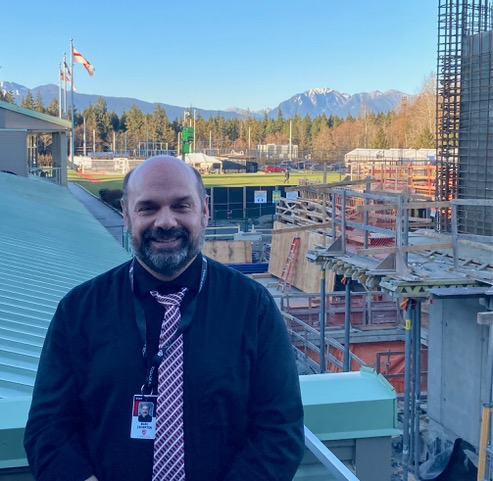
By Marc Crompton
COVID. Ugh. We have all struggled through the pandemic as our schools and our spaces have pivoted (do you break out in hives every time you hear that word?) to adjust to the changing landscape. I know that I’ve found myself struggling with the ideas around having clarity about the value of our spaces to the various stakeholders. I think about conversations I’ve had about what a Learning Commons is and isn’t and wondering if my space measures up. Is it books? Is it a digital space? Is it the community? Is it collaborative and flexible? I wonder if I should put more value on the space in the way others see it rather than how I see it. Is it a large common space that administration can use to “put” kids? Is it a dangerous, high-touch space where disease can be spread? Is it a party room for those who have nowhere else to go? And I spend a lot of time fretting over the conflicts between uses of the space. Is it defined uses or flexible? Is it a catalyst for reading or a book dispensary? Is it loud or quiet?
I am blessed. In my more than a decade as a librarian at my school, I have been supported in a renovation of my current physical space. We are now building a new building where the current roles of the Library Learning Commons will be expanded, and I’m a regular part of the feedback mechanism providing direction for these spaces. I get that many of my colleagues, if they are lucky enough to have upgrades to their spaces at all, have these changes made for them without their consultation. And most never have the opportunity to grow their space at all. I value my inclusion in this process and the opportunities that I have. Not only is this an opportunity to get bigger and better, but this process is also an opportunity to reflect on priorities as these new spaces are designed.
Our current space is a popular hub of the school. It is not unusual to have 80 students in over a lunch break (with only 72 chairs!) At that time, we may have students who are using the laser cutter in the makerspace, groups practicing for a languages test, others who are writing a research paper, while others try to read a book next to others who are playing an online game on their phones. It is great that the space is well used, but often the uses conflict with each other making the space ineffective for many of those users.

Let me tell you about the new space. Our physical footprint is expanding by roughly 3 times, and we are welcoming into the new space personal counseling, learning support, and other student supports. Our makerspace(s) will be physically separated from our library space. There will be breakout rooms that can be used for collaborative work. There will be a clear distinction between loud spaces and quiet spaces. The hands-on kinds of inquiry will be separated from the more academic types of research. The spaces will be more defined in their use and serendipitous connections in learning will likely be less common. One will not be building something in the makerspace and reach out for The Big Book of Maker Skills sitting on the shelf. I’m reminded of discussions in Adam Savage’s Every Tool’s a Hammer and Zen and The Art of Motorcycle Maintenance (Pirsig). We currently have everything visible and within easy reach, but it can be a mess and we can get in each others’ ways. In the new space, it will be more of an “everything in its place” kind of approach, but this will mean that it will be further to go for the tool that you may need to move your work multiple times depending on what part of that work you are involved in. In our future space, it is possible that you might be reading about a great project in the “library” space, walk over to a whiteboard in a breakout room or another space to plan out the project, then move again to a makerspace to build it.
I love the idea that the students who value quiet spaces (who are also the ones who rarely complain and simply leave if it gets too loud) will actually have a space to go. I don’t love that we are separating space use and losing possibilities for collaboration and accidental synergy. And this is where I come back to what a Learning Commons “should” be. Is it by definition a flexible collaborative space which then is then, by default, loud? Is it a space that serves all users by allowing all types of use including the quieter, more individual pursuits? Are we doing our users a dis-service by allocating parts of the Learning Commons to be more traditional “library” spaces? Do we turn some away in order that others can work more effectively?
I have few answers, but I have a lot of questions. I also understand that every space and community is unique and the right answer for one is not the right answer for another. But I am interested in perspectives. Feel free to email me with your thoughts.

Marc Crompton is a 30 year veteran educator with more than a third of that time spent working in libraries. His degrees are in music performance, education and he holds an MLIS from San Jose State University. He’s been lucky enough to work closely with David Loertscher and, with him, has co-authored Collection Development Using the Collection Mapping Technique. He is excited about the role of the Makespace in the Learning Commons environment and works extensively with his Maker Club and a STEM program as well as heading the Sr Learning Commons at St George’s School in Vancouver.